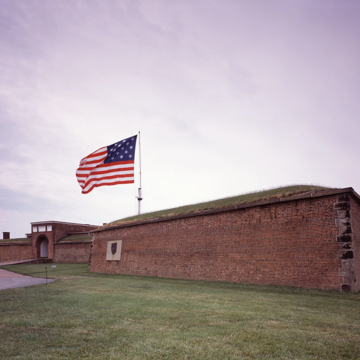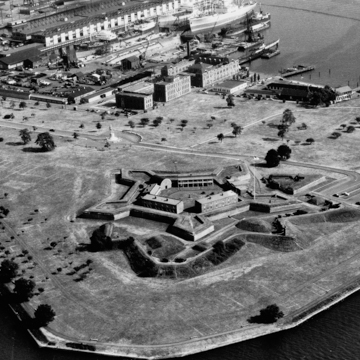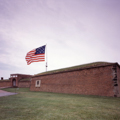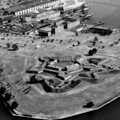The nighttime bombardment of Fort McHenry by the British Navy on September 13–14, 1814, inspired lawyer Francis Scott Key to write the poem that would become the lyrics for the U.S. national anthem. Now a unit of the National Park Service (NPS), Fort McHenry preserves and interprets the original late-eighteenth-century five-bastioned fortification, barracks, officers’ quarters, and powder magazine, including buildings and defensive features added later in the nineteenth century. As its importance for coastal defense waned, the fort continued to be used as a garrison until 1912, a hospital during World War I, and a Coast Guard training facility during World War II.
The 1914 centennial of the War of 1812 bombardment raised awareness of the fort’s history, and by 1925 it was a national battlefield park under the management of the War Department. In 1933 Fort McHenry and all the battlefield parks were transferred to the National Park Service. Despite modifications and various restoration efforts over the decades, the original brick and earth pentagonal star fort and parade ground configuration is one of the finest examples of early coastal fortifications in the United States.
A contemporary visitor center designed by GWWO Architects of Baltimore opened in 2011 and replaced the one built during the mid-twentieth century NPS improvement program known as Mission 66. Designed with curved walls to reference an abstract flag, the new visitor center’s exterior contrasts zinc sheathing in some areas with red brick repurposed from fort restoration work. On the interior, an introductory film culminates with the uncovering of a window wall revealing the fort flying a reproduction of the Star Spangled Banner Flag, continuing a tradition started with the previous visitor center.





